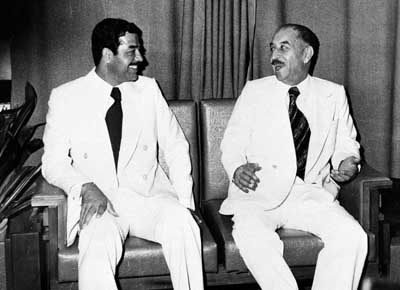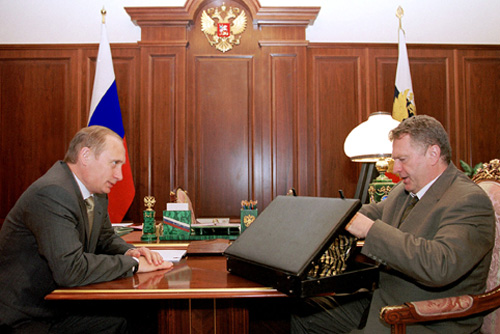|
Masgouf
Masgouf (Arabic: المسكوف), is a Mesopotamian dish consisting of seasoned, grilled carp; it is often considered the national dish of Iraq. Geographical distribution Outside of Iraq, masguf is found in Damascus due to a high number of Iraqis who lived there after the 2003 invasion of Iraq."أسعار العقارات في جرمانا تتحدى الإنحدار .. والجمود لم " ("Real estate prices in Jaramana challenge Downgrade ..") ''De Press - Buildex Online'' 19 March 2009, in Arabic, last accessed 18 September 2010 See also * |
Iraqi Cuisine
Iraqi cuisine is a Middle Eastern cuisine that has its origins in the ancient Near East culture of the fertile crescent.http://www.thingsasian.com/stories-photos/3592 Foods of Iraq: Enshrined With A Long History. Habeeb Salloum. Clay tablet, Tablets found in ancient ruins in Iraq show recipes prepared in the temples during religious festivals—the first cookbooks in the world. Ancient Iraq's cultural sophistication extended to the culinary arts. The Iraqi kitchen reached its zenith in the Islamic Golden Age when Baghdad was the capital of the Abbasid Caliphate (750–1258 AD). In Northern Iraq pomegranate is added to dolma. In Southern Iraq, fish is a staple. The center of the country is known for its rice dishes and sweets. In terms of agriculture, Iraq harks back to ancient Mesopotamia, growing wheat and crops requiring winter chill such as Apple#Popular uses, apples and Drupe#Examples, stone fruits. Lower Mesopotamia grows Rice#Food, rice and Barley#Food, barley, Citrus#Cu ... [...More Info...] [...Related Items...] OR: [Wikipedia] [Google] [Baidu] |
Arab Cuisine
Arab cuisine collectively refers to the regional culinary traditions of the Arab world, consisting of the Maghreb (the west) and the Mashriq (the east). These cuisines are centuries-old and reflect the culture of trading in ingredients, spices, herbs, and commodities among the Arabs. The regions have many similarities, but also unique traditions. They have also been influenced by climate, cultivation, and mutual commerce. Medieval cuisine Breads The white bread was made with high-quality wheat flour, similar to bread but thicker, the fermented dough was leavened usually with yeast and "baker's borax" () and baked in a ''tandoor''. One poetic verse describing this bread: "In the farthest end of Karkh of Baghdad, a baker I saw offering bread, wondrous fair. From purest essence of wheat contrived. Radiant and absolute, you may see your image reflected, crystal clear. rounds glowing with lovely whiteness, more playful than gorgeous singing girls, They look like crystal trays, an ... [...More Info...] [...Related Items...] OR: [Wikipedia] [Google] [Baidu] |
Carp
The term carp (: carp) is a generic common name for numerous species of freshwater fish from the family (biology), family Cyprinidae, a very large clade of ray-finned fish mostly native to Eurasia. While carp are prized game fish, quarries and are valued (even pisciculture, commercially cultivated) as both food fish, food and ornamental fish in many parts of the Old World, they are considered trash fish and invasive species, invasive pest (organism), pests in many parts of Africa, Australia and most of the United States. Biology The cypriniformes (family Cyprinidae) are traditionally grouped with the Characiformes, Siluriformes, and Gymnotiformes to create the superorder Ostariophysi, since these groups share some common features. These features include being found predominantly in fresh water and possessing Weberian ossicles, an anatomical structure derived from the first five anterior-most vertebrae, and their corresponding ribs and neural crests. The third anterior-most pair ... [...More Info...] [...Related Items...] OR: [Wikipedia] [Google] [Baidu] |
Mesopotamia
Mesopotamia is a historical region of West Asia situated within the Tigris–Euphrates river system, in the northern part of the Fertile Crescent. Today, Mesopotamia is known as present-day Iraq and forms the eastern geographic boundary of the modern Middle East. Just beyond it lies southwestern Iran, where the region transitions into the Iranian plateau, Persian plateau, marking the shift from the Arab world to Iran. In the broader sense, the historical region of Mesopotamia also includes parts of present-day Iran (southwest), Turkey (southeast), Syria (northeast), and Kuwait. Mesopotamia is the site of the earliest developments of the Neolithic Revolution from around 10,000 BC. It has been identified as having "inspired some of the most important developments in human history, including the invention of the wheel, the planting of the first cereal crops, the development of cursive script, mathematics, astronomy, and agriculture". It is recognised as the cradle of some of t ... [...More Info...] [...Related Items...] OR: [Wikipedia] [Google] [Baidu] |
Levantine Cuisine
Levantine cuisine is the traditional cuisine of the Levant, in the sense of the rough area of former Ottoman Syria. The cuisine has similarities with Egyptian cuisine, North African cuisine and Ottoman cuisine. It is particularly known for its ''meze'' spreads of hot and cold dishes, most notably among them ''ful medames'', ''hummus'', ''tabbouleh'' and '' baba ghanoush'', accompanied by bread. History The history of Levantine cuisine can be traced back to the early civilizations that flourished in the region, such as the Canaanites, Israelites, Phoenicians, and Hittites. These ancient cultures developed complex agricultural systems, producing grains, legumes, fruits, and vegetables that would become staples of the Levantine diet. Bread, olive oil, and wine were integral to the cuisine from the very beginning, and remain so today. Levantine dishes Classic Mezes or small dishes * '' Baba ghanoush'' (بابا غنوج)—a dip made from baked, mashed eggplant mixed with lemon, ... [...More Info...] [...Related Items...] OR: [Wikipedia] [Google] [Baidu] |
Fish Dishes
A fish (: fish or fishes) is an aquatic, anamniotic, gill-bearing vertebrate animal with swimming fins and a hard skull, but lacking limbs with digits. Fish can be grouped into the more basal jawless fish and the more common jawed fish, the latter including all living cartilaginous and bony fish, as well as the extinct placoderms and acanthodians. In a break to the long tradition of grouping all fish into a single class (Pisces), modern phylogenetics views fish as a paraphyletic group. Most fish are cold-blooded, their body temperature varying with the surrounding water, though some large active swimmers like white shark and tuna can hold a higher core temperature. Many fish can communicate acoustically with each other, such as during courtship displays. The study of fish is known as ichthyology. The earliest fish appeared during the Cambrian as small filter feeders; they continued to evolve through the Paleozoic, diversifying into many forms. The earliest fish w ... [...More Info...] [...Related Items...] OR: [Wikipedia] [Google] [Baidu] |
Assyrian Cuisine
Assyrian cuisine is the cuisine of the indigenous Assyrian people, Eastern Aramaic-speaking Syriac Christians of Iraq, northeastern Syria, northwestern Iran and southeastern Turkey. Assyrian cuisine is primarily identical to Iraqi/Mesopotamian cuisine, as well as being very similar to other Middle Eastern and Caucasian cuisines, as well as Greek cuisine, Levantine cuisine, Turkish cuisine, Iranian cuisine, Palestinian cuisine, and Armenian cuisine, with most dishes being similar to the cuisines of the area in which those Assyrians live/originate from. It is rich in grains such as barley, meat, tomato, herbs, spices, cheese, and potato as well as herbs, fermented dairy products, and pickles. Lunch and dinner There is no difference to lunch and dinner to Assyrians as there are with some other cultures. They are referred to as ''kawitrā w kharamsha'', or ''ˁurāytā w ḥšāmtā'' (ܚܕܝܐ ܘ ܥܫܝܐ). Lunch and dinner typically consist of basmati rice, which can be prepar ... [...More Info...] [...Related Items...] OR: [Wikipedia] [Google] [Baidu] |
Saddam Hussein
Saddam Hussein (28 April 1937 – 30 December 2006) was an Iraqi politician and revolutionary who served as the fifth president of Iraq from 1979 until Saddam Hussein statue destruction, his overthrow in 2003 during the 2003 invasion of Iraq, U.S. invasion of Iraq. He previously served as the Vice President of Iraq, vice president from 1968 to 1979 and also as the prime minister of Iraq, prime minister from 1979 to 1991 and later from 1994 to 2003. A leading member of the Ba'ath Party, Arab Socialist Ba'ath Party, he espoused Ba'athism, a mix of Arab nationalism and Arab socialism, while the policies and political ideas he championed are collectively known as Saddamism. Born near the city of Tikrit to a Sunni Islam, Sunni Arabs, Arab family, Saddam joined the revolutionary Ba'ath Party in 1957. He played a key role in the 17 July Revolution that brought the Ba'athists to power and made him Vice President of Iraq, vice president under Ahmed Hassan al-Bakr. During his tenure ... [...More Info...] [...Related Items...] OR: [Wikipedia] [Google] [Baidu] |
Duma
A duma () is a Russian assembly with advisory or legislative functions. The term ''boyar duma'' is used to refer to advisory councils in Russia from the 10th to 17th centuries. Starting in the 18th century, city dumas were formed across Russia. The first formally constituted state duma was the Imperial State Duma introduced to the Russian Empire by Emperor Nicholas II in 1905. The Emperor retained an absolute veto and could dismiss the State Duma at any time for a suitable reason. Nicholas dismissed the First State Duma (1906) within 75 days; elections for a second Duma took place the following year. The Russian Provisional Government dissolved the last Imperial State Duma (the fourth Duma) in 1917 during the Russian Revolution. Since 1993, the State Duma () has functioned as the lower legislative house of the Russian Federation. Etymology The Russian word is inherited from the Proto-Slavic word '' *duma'' which is of disputed origin. Its origin has many proposed theor ... [...More Info...] [...Related Items...] OR: [Wikipedia] [Google] [Baidu] |
Vladimir Zhirinovsky
Vladimir Volfovich Zhirinovsky (, , né Eidelstein, ; 25 April 1946 – 6 April 2022) was a Russian right-wing populist politician and the leader of the Liberal Democratic Party of Russia (LDPR) from its creation in 1992 until his death in 2022. He served as a Deputy Chairmen of the State Duma, deputy chairman of the State Duma from 1993 to 2000 and from 2011 until 2022. He also worked as a delegate in the Parliamentary Assembly of the Council of Europe from 1996 to 2008. During his lifetime, Zhirinovsky ran in every single Russian presidential elections, Russian presidential election except for the election in 2004 Russian presidential election, 2004. He was known for many controversies, as well as staunch advocacy for Russian military action against NATO. Early life and background Zhirinovsky was born in Almaty, Alma-Ata, the capital of the Kazakh Soviet Socialist Republic, Kazakh SSR, modern-day Almaty, Kazakhstan. His father, Volf Isaakovich Eidelshtein, was a History o ... [...More Info...] [...Related Items...] OR: [Wikipedia] [Google] [Baidu] |
Jacques Chirac
Jacques René Chirac (, ; ; 29 November 193226 September 2019) was a French politician who served as President of France from 1995 to 2007. He was previously Prime Minister of France from 1974 to 1976 and 1986 to 1988, as well as Mayor of Paris from 1977 to 1995. After attending the , Chirac began his career as a high-level civil servant, entering politics shortly thereafter. Chirac occupied various senior positions, including minister of agriculture and minister of the interior. In 1981 and 1988, he unsuccessfully ran for president as the standard-bearer for the conservative Gaullist party Rally for the Republic (RPR). Chirac's internal policies initially included lower tax rates, the removal of price controls, strong punishment for crime and terrorism, and business privatisation. After pursuing these policies in his second term as prime minister, Chirac changed his views. He argued for different economic policies and was elected president in 1995, with 52.6% of the ... [...More Info...] [...Related Items...] OR: [Wikipedia] [Google] [Baidu] |








